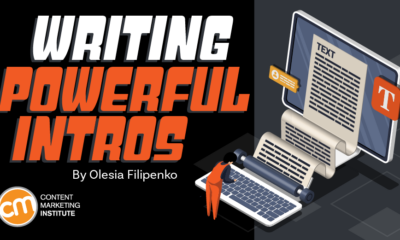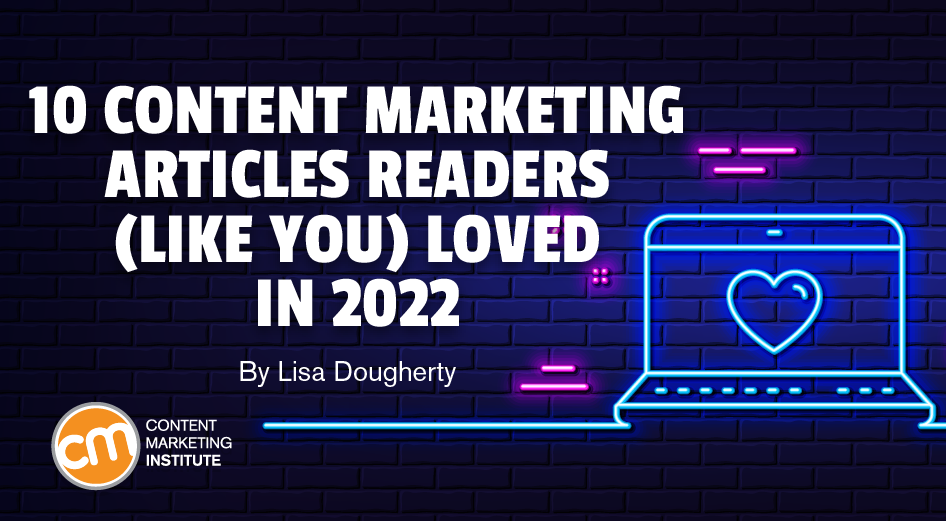MARKETING
How to Truly Help Readers

Updated April 11, 2022
Introduced almost 10 years ago, this obsession in content marketing circles still negatively affects my reading experience. It also makes finding the good stuff difficult.
What is this old kid on the block that’s still messing things up?
Skyscraper content.
Much like infographics, listicles, and other hot content marketing trends before them, the original concept of skyscraper was brilliant. Its overuse and misuse make it a menace.
What is skyscraper content?
To create skyscraper content, content marketers:
- Find successful content (typically from the top search results on Google but also popular content on social).
- Reverse engineer that content’s success by evaluating who linked to or shared it.
- Create something better.
- Replicate its distribution strategy by contacting those who linked to or shared the original and letting them know about the “new” content.
I encourage you to read the post by Brian Dean at Backlinko, who continues to be a good practitioner of this methodology.
Skyscraper #content involves the reverse engineering of successful content to create something better and replicate its distribution strategy, says @jfdimark via @CMIContent. Click To Tweet
I must admit when I first read about skyscraper content and the results it could produce, I was excited and built it into my content marketing planning.
However, as a content consumer frequently on the receiving end of skyscraper content, I now think twice about it.
What’s wrong with it
The crux of my issue with so many blogs and businesses trying to outdo each other is this: These content creators think skyscraper content is synonymous with length, not value.
This may be a genuine misunderstanding. They use the word count as a proxy for value, something some people believe Google does as well. And there’s some truth in this. It’s hard – though not impossible – to deliver a ton of value in a post of 300 to 500 words. Content of 1,000 to 2,000 words typically gives you the ability to write with some depth and authority.
Creators who equate skyscraper content length, not value, are making a big mistake, says @jfdimark via @CMIContent. Click To Tweet
But skyscraper content isn’t just about producing longer and longer posts to rank higher than your competitors on search engine results pages. Everyone loses in that arms race. It ignores your unique strengths in favor of an easy-to-replicate, hard to defend tactic of writing on a given subject.
Skyscraper can forget the most important audience
Creating skyscraper content that ignores true value ultimately leads to a poor reader experience. First, this content is written for search engines or to hit internally defined metrics, not for real readers.
This content creation process leads to poor decisions, such as padding posts with insufferably long, non-valuable introductions about the history of the keyword term. Or stuffing in a dozen oft-used quotes on the subject from other experts in the hope they’ll share the post. Or adding in a ton of vaguely relevant stats to try to build authority.
I’ve read several articles where I’m well over 1,000 words in, and I still have not gotten to the first of the “10 tips.” Their content creators were focused on bulking up the length and making it “comprehensive” at the expense of my sanity (and time).
Another side effect of conflating skyscraper content with super-long content is failing to make tough decisions about what not to include. Actively excluding data points and fluff is a service to the reader and a sign of a good writer.
Excluding fluff and unnecessary data is a service to the reader, says @jfdimark via @CMIContent. Click To Tweet
Don’t make me read all of your 10,000 words just to find the one original or useful concept — your readers shouldn’t be the editor of your content; you should.
Unfortunately, the marketers creating skyscraper content who focus on length add everything they’ve ever come across in the name of “completeness” and to outdo their competitors.
Finally, a blog that publishes skyscraper content almost exclusively becomes inaccessible.
As Google continues to refine its algorithm to deliver what readers need and want to consume, skyscraper content that fails to consider the readers first will fall from (or never make) the rankings.
How to abandon unoriginal content
Here’s another huge issue that is a symptom of bad skyscraper content – unoriginality. When you create new content modeled after existing successful content, how will readers find anything new? How will they discover new angles? And how, exactly, are you adding a valuable content choice?
Again, this isn’t to disparage the methodology of skyscraper content. When done well, it forces you to find a unique angle to elevate the existing content and make it something new and your own. It can be done well in a fresh format and presentation. For example, you could take a long article and turn it into an easier-to-digest interactive chart. Or you could take turn a dense subject into a more accessible cartoon, SlideShare presentation, or video.
You could add your brand’s unique story, experiences, expertise, etc., to the original topic, meaning someone reading both the original and your skyscraper post would get unique value and understanding from both.
However, too often, skyscraper content doesn’t add anything other than more words to the topic. Sometimes you see this happen several times from different competitors, leaving the reader with three or four “ultimate,” “complete,” or “definitive” guides that are substantially the same. Adopting this skyscraper content strategy means you’re always going to be a follower, never original.
How to make it work
Just because a poorly implemented skyscraper content approach can lead to a poor reader experience doesn’t mean you should avoid the technique altogether. Here are three ways I think it could – and should – be implemented:
- Genuine need: Find content in the top three search results that have been shared a lot but are now outdated, inaccurate, full of broken links, etc. It is in the readers’ interest for you to create something current. (That doesn’t necessarily mean it has to be twice as long.)
- Unique angle: Creating nuanced content on a familiar topic can add something to the readers’ experience and teach them something new. It could be the inclusion of a personal account, a dissenting viewpoint, or a genuinely new way to tackle an old problem.
- Focus on value, not text: Skyscraper content is about creating content 10 times more valuable, not 10 times longer. For example, take a huge heap of text and make it more accessible by turning it into a video or an interactive tool; or simplifying a complex subject by visualizing.
HANDPICKED RELATED CONTENT:
Go for value, not height with skyscraper content
As with all great ideas that work, skyscraper content is powerful, but unfortunately, that means it is widely misused too. That’s a shame because when employed properly, it can be a methodology of content creation that serves readers and businesses well.
The next time you think about writing that “definitive” guide that capitalizes on others’ successful content, ask if it’s really needed. Will it truly help your readers?
If the answer isn’t a resounding “yes,” start building. But, if you realize you’re only doing it for internal metrics, don’t. Instead, go create something original that will delight your audience.
Cover image by Joseph Kalinowski/Content Marketing Institute












You must be logged in to post a comment Login